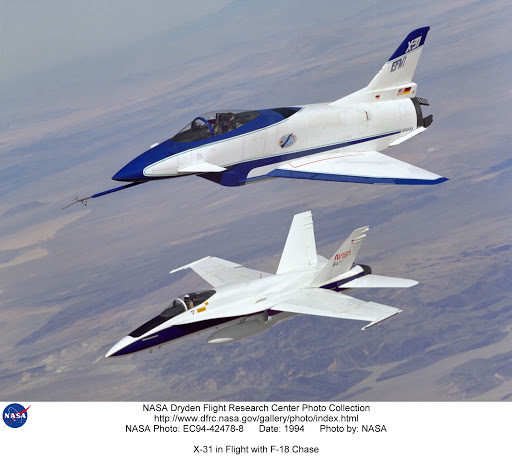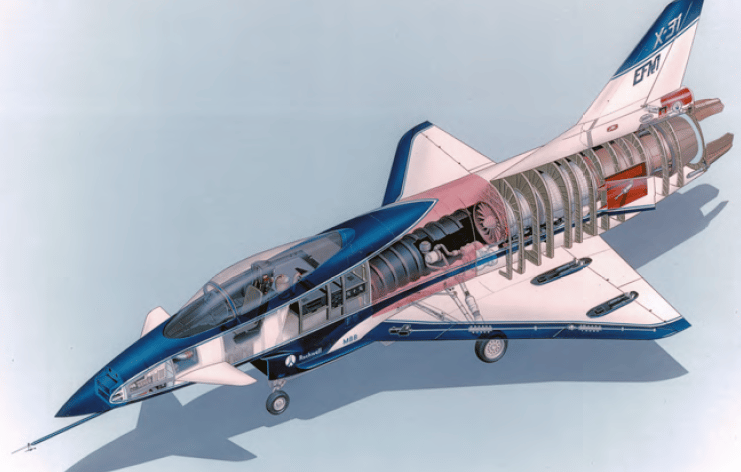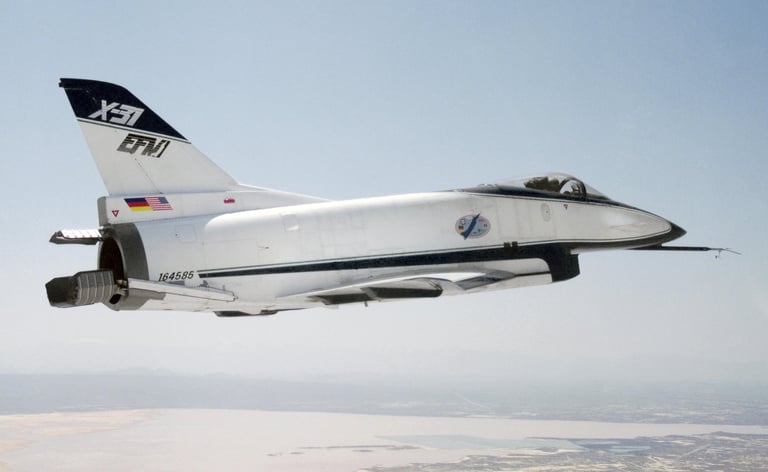Rockwell MBB X-31
Fact for 6/7/2021
FACTS
Two X-31 Enhanced Fighter Maneuverability demonstrators were test-flown during the early 1990s at NASA's Dryden Flight Research Center, Edwards, CA, to obtain data on control in the post-stall flight regime. The X-31 program demonstrated the value of thrust vectoring – directing engine exhaust flow – coupled with advanced flight control systems, to provide controlled flight at very high angles of attack.




In the X-31, the maximum angle of attack at which airflow could be maintained over the wings in normal flight was 30 degrees nose-up from the aircraft's direction of flight, beyond which the aircraft would stall. Flying in the post-stall regime – flying at angles of attack greater than the maximum – was achieved in the X-31 when thrust vectoring was combined with advanced digital flight controls. Three thrust-vectoring paddles mounted on the X-31's airframe adjacent to the engine exhaust nozzle directed the exhaust flow to provide control in pitch and yaw.
Made of carbon-carbon, the paddles could sustain temperatures of up to 1,500 degrees C for extended periods. In addition the X-31s were configured with movable forward canards and eventually with fixed aft strakes. Both supplied additional pitch control in tight maneuvering situations.
The X-31 research project produced technical data at high angles of attack. This information gave engineers and aircraft designers a better understanding of aerodynamics, effectiveness of flight controls and thrust vectoring, and airflow phenomena at high angles of attack.


The aircraft exhibited low tolerance for sideslip, which became more pronounced as angle of attack increased. Because of difficulty gathering accurate data at high AOA, the X-31 team incorporated an unusual nose boom called a Kiel probe to calculate airflow. The Kiel probe was bent 10 degrees downward from the standard nose boom pitot configuration for more accurate data yield at higher AOA.
The X-31 had a wingspan of 23.83 feet and a fuselage length of 43.33 feet. It was powered by a single General Electric F404-GE-400 turbofan engine that produced 16,000 pounds of thrust in afterburner. Typical takeoff weight of the X-31 was 16,100 pounds including 4,100 pounds of fuel..
The X-31 design speed was Mach 0.9 with an altitude capability of 40,000 feet. For specific tests to determine thrust vectoring effectiveness at supersonic speeds the aircraft was flown to Mach 1.28 at an altitude of 35,000 feet.
Source - Nasa.gov
